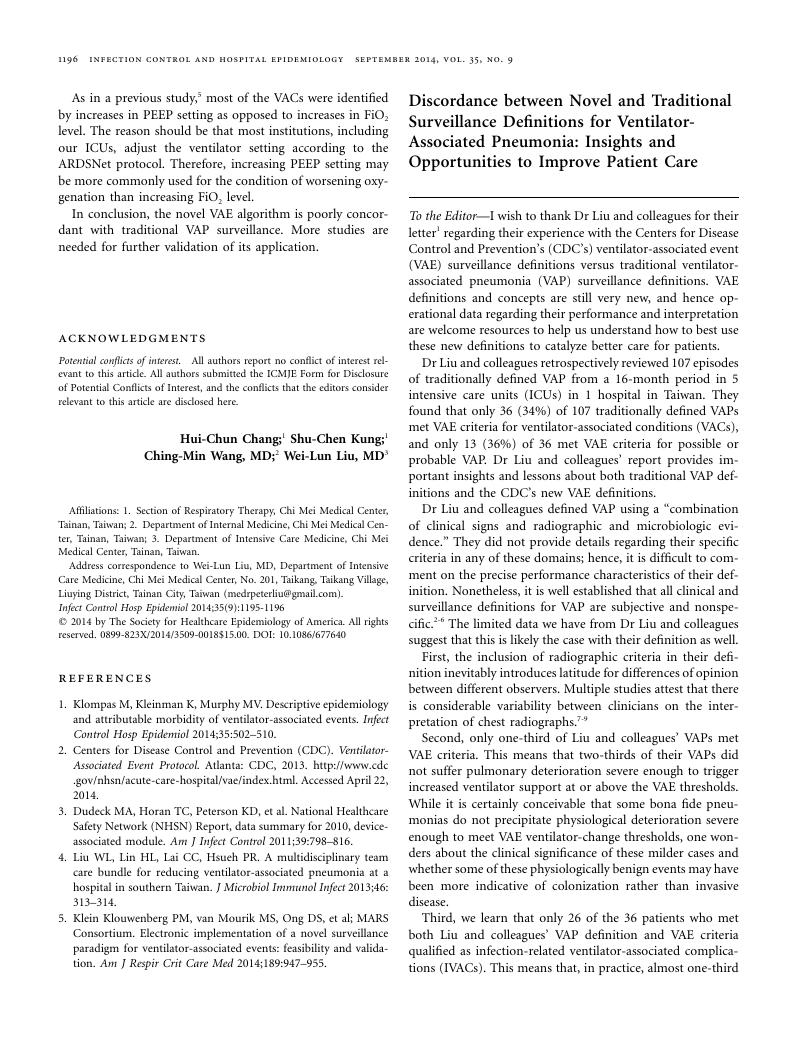Crossref Citations
This article has been cited by the following publications. This list is generated based on data provided by Crossref.
Selvanderan, Shane P.
Summers, Matthew J.
Finnis, Mark E.
Plummer, Mark P.
Ali Abdelhamid, Yasmine
Anderson, Michael B.
Chapman, Marianne J.
Rayner, Christopher K.
and
Deane, Adam M.
2016.
Pantoprazole or Placebo for Stress Ulcer Prophylaxis (POP-UP): Randomized Double-Blind Exploratory Study*.
Critical Care Medicine,
Vol. 44,
Issue. 10,
p.
1842.
Fan, Yunzhou
Gao, Fang
Wu, Yanyan
Zhang, Jie
Zhu, Ming
and
Xiong, Lijuan
2016.
Does ventilator-associated event surveillance detect ventilator-associated pneumonia in intensive care units? A systematic review and meta-analysis.
Critical Care,
Vol. 20,
Issue. 1,
Cocoros, Noelle M.
and
Klompas, Michael
2016.
Ventilator-Associated Events and Their Prevention.
Infectious Disease Clinics of North America,
Vol. 30,
Issue. 4,
p.
887.
Abdallah, Hatem O.
Weingart, Melanie F.
Fuller, Risa
Pegues, David
Fitzpatrick, Rebecca
and
Kelly, Brendan J.
2021.
Subglottic suction frequency and adverse ventilator-associated events during critical illness.
Infection Control & Hospital Epidemiology,
Vol. 42,
Issue. 7,
p.
826.





